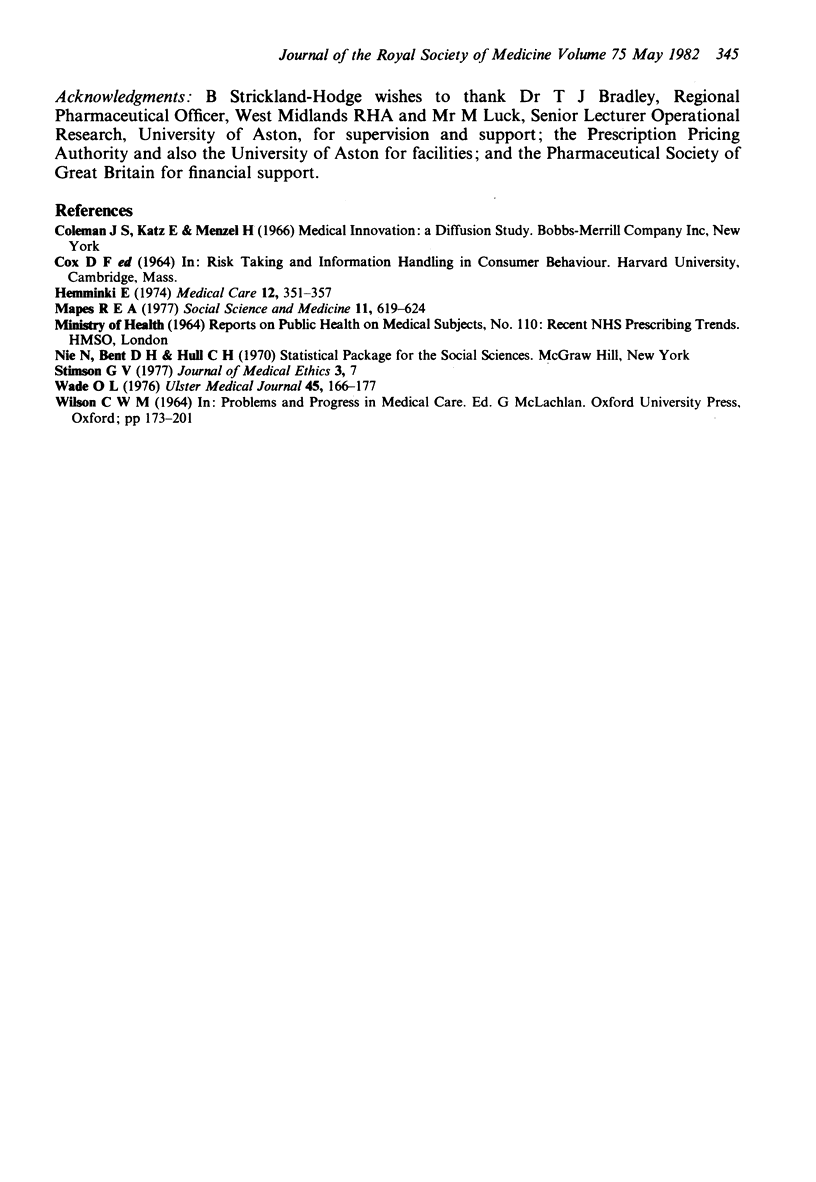Abstract
National Health Service prescriptions written by general medical practitioners in one urban Area were analysed over a fifteen-month period to classify doctors into those who prescribed a named drug early or relatively later in its market life. A questionnaire, designed to answer a number of hypotheses intended to characterize these groups of practitioners, was mailed to the 100 doctors in each group. Statistical analysis of the results suggests that there are several identifiable characteristic differences between `early' and `late' prescribers. Early prescribers have larger list sizes than late prescribers and rely more on industrial sources for information about drugs.
Full text
PDF




Selected References
These references are in PubMed. This may not be the complete list of references from this article.
- Elmes P. C., Hood H., McMeekin C., Wade O. L. Prescribing in Northern Ireland. Study no. 1: Sleeping tablets. Ulster Med J. 1976;45(2):166–177. [PMC free article] [PubMed] [Google Scholar]
- Hemminki E. The effect of a doctor's personal characteristics and working circumstances on the prescribing of psychotropic drugs. Med Care. 1974 Apr;12(4):351–357. doi: 10.1097/00005650-197404000-00006. [DOI] [PubMed] [Google Scholar]
- Mapes R. E. Physicians' drug innovation and relinquishment. Soc Sci Med. 1977 Sep;11(11-13):619–624. doi: 10.1016/0037-7856(77)90044-0. [DOI] [PubMed] [Google Scholar]
- Stimson G. V. Do drug advertisements provide therapeutic information? J Med Ethics. 1977 Mar;3(1):7–13. doi: 10.1136/jme.3.1.7. [DOI] [PMC free article] [PubMed] [Google Scholar]


